
Fast Mimicking Diet: What it is, why to try it (or not) & how to sign up!
A few months ago I read The Longevity Diet by Dr. Valter Longo—I highly recommend this book to anyone wanting to learn a way of eating that is well-balanced and linked to a higher degree of health and longevity. I was intrigued by his findings regarding how a low-calorie, vegan diet could mimic the benefit of fasting without muscle-wasting and other negative side effects of a prolonged fast. Over the last 20 years, he has been studying how to use food to promote healing and developed a product line to make it easy to add the Fast Mimicking Diet to a 5-day protocol for the benefits of metabolic reset and stimulating autophagy (cellular clean-up) and cellular rejuvenation.
Several things impress me about his company, L-Nutra:
More information on this can be found on the Prolon Site: https://prolonlife.com/pages/the-science
Here’s what I learned from my test of the 5-day fast!
For this test, my husband Charlie agreed to do the program with me. This was important to me because he is a picky eater and his evaluation of taste and texture would help me rate suitability for a broad range of patients. It was also important because he’s never done any fasting before. I wanted to see how he handled the calorie-restricted diet as well.
Today as I’m writing this is Day 5, I will add to this around Day 7 to capture afterthoughts and later observations but here are some initial results.
Day 5:
I have done calorie restrictions and lighter fasting before. While I did feel hungry here and there, throughout the 5 days—by snacking consistently on the items in my box throughout the day I was never starving, lightheaded or woozy! Day 4 and 5 I did experience some headaches and body aches but they were all localized around the areas of past injuries—I’m assuming this is part of the repair process. None of it was bad enough to make me think about taking something, it was more like a dull ache than pain. The texture and flavors of the items are ok—it’s freeze-dried soups, bars, and crackers. The crackers and olives were my favorite! There are a couple of chocolate-covered rice crisps throughout the 5 days to give a little sweet something.
Charlie was hungry a lot throughout the 5 days—a couple of times he had to add some extra food (a small amount of nuts or a bite or two of cottage cheese). This may have added to the sense of being hungry but he didn’t give up and got through it.
We both limited our physical activity and chose a time when we could rest if we felt like we needed it during the 5 days. I wouldn’t have done a workout but my energy was fine through the 5 days. Charlie definitely slept more but it’s unclear if that was due to napping to avoid feeling hungry or because he was that tired from the process.
The next few days post fast will be telling. I do know I appreciate that I am back to the weight I feel best at. I feel a blossoming of energy and want to work out!
As recommended, we would repeat this process 1x per month for 3 months and then go to 2-3x per year for maintenance. Time will tell if Charlie will do this with me again next month.
Now—who should not do this?
Day 7 update:
I’ve been noticing more muscle soreness after increasing my workout intensity over the last couple of years. I added in a pretty tough workout to see if the fast changed this. I can tell my metabolism is working more efficiently—I’ve actually dropped another pound even though I’m eating my normal amount and another ¼” off my waist measurement. Charlie noticed his clothes fit better—and he’s said he’s willing to do this all again next month as we follow the initial 1x per month for 3 months as recommended by Dr. Longo.
Order your kit HERE (external site)
If you are diabetic, pre-diabetic, or are under treatment by an MD for any condition please contact the office for a FREE CONSULT to determine if this program is right for you.
Summer Healing Herbs: Lily Bulb & Artemisia Tea

It’s tempting to reach for a cold glass of water or sweet tea in this hot weather, but those ice-cold drinks may not be the best way to stay fit and hydrated! In many ruggedly hot climates, the tradition is to drink hot teas that are lightly sweetened to help stay cool. How does that work?
There is some evidence that drinking a warm beverage increases evaporative heat loss potential and, therefore, reduces body heat storage in dry environments that allow for sweat evaporation. The keywords here are dry environments. Think: desert conditions—so when it’s hot and dry that hot drink will help you cool off more. In hot and humid climates the humidity prevents the sweat from evaporating so the benefit of the hot drink won’t be as great unless there is a breeze helping to increase the evaporation or sweat.
As Tolkien wrote in The Lord of the Rings, “Pay heed to the tales of old wives. It may well be that they alone keep in memory what it was once needful for the wise to know.” Oral tradition should not be dismissed out of hand, simply because it initially strikes us as absurd.
In the heavy humid heat of a Kentucky summer, I enjoy this recipe from southern China—this herbal tea made of lily bulbs and artemisia helps improve circulation, drain excess dampness, support the lungs, and boost immune function. It can be enjoyed hot or cool but preferably not iced (and a little honey or stevia is fine). Given that our weather is sometimes humid and sometimes dry, let the weather determine your drink temperature for optimal cooling.
Other teas to help beat the heat include: hibiscus, mint, chrysanthemum, and tangerine peel—either alone or served in pairings.
Plastic-Free July

This article was sent to me by my brother. It is eye-opening and has a shockingly bad prognosis for the future of our planet if we don’t start thinking about ways to reduce our reliance on plastic and look hard at the reality of the hidden costs of recycling:
Quillette Article: Recycling Plastic Is a Dangerous Waste of Time
Change doesn’t happen overnight and it doesn’t happen because the government mandates it. It happens because people change things with how they spend their money. We’ve seen this in the incorporation of stevia and other healthier sweeteners in food, a broader selection of gluten-free options, etc. It also happens because each person does what they can to promote that change. Here are some little ways we at Raja Wellness will be working to reduce plastics:
In my private life here are some things I do to reduce my plastic use:
There are many ways we can make changes for the better—while supporting local farmers and artisans, and choosing natural and organic options!
Parasites?!?
This is something I’ve heard more frequently in-clinic these days—thanks to TikTok and Instagram gurus peddling everything from DIY remedies to thousands of dollars in “high-end” treatments. Most begin with:
“OK, so you are feeling tired, unfocused, having headaches, joint pain, depression, anxiety, cravings, skin rashes, (or any other common symptoms)?”
And then there’s a dramatic story, usually about passing lots of WORMS, and being told to just drink this tonic, take this pill, or book a “clearing session” for $5,000 and get rid of those parasites….Yes, I know—I sound pretty jaded right here!
Over the last 10 years, the same techniques have spotlighted candida infections, SIBO, Chronic Fatigue Syndrome, and other disorders that have a range of symptoms and are difficult to meaningfully diagnose. Worse, these are symptoms can be applied to almost anyone and billions of dollars in products have been sold and relatively few of those purchasers helped. When it comes to parasites, many of the popularly recommended herbs can be toxic unless used with very careful guidance. Just because you can buy it over the counter doesn’t mean it is without risk. Tylenol is safe if taken as directed but not as safe for people drinking alcohol and deadly if too much is taken. The same can be true of many anti-parasitic herbs! At higher doses, if taken too long or if combined with prescription or over-the-counter medications, they can cause more harm than good.
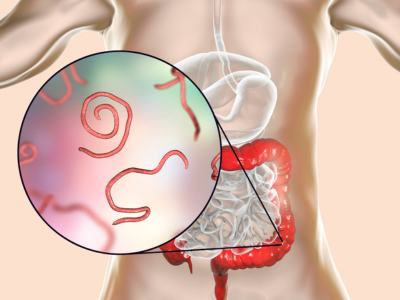
On the other hand, yes, parasites absolutely can be an issue. And yes, biomedical doctors in the US largely ignore this possible cause of disease in anyone over the age of 8 (pinworms are widely treated and addressed in small children). But for adults complaining of passing tapeworms or having any other clear signs of parasites, it’s virtually impossible to find a doctor who will do a stool test even to see what parasites might be there. The eggs of many parasites are visible with a simple microscope and easily identified—and yet finding someone to do this is nearly impossible. I understand the patient's frustrations and certainly have worked with herbs to help people with parasites. If you have traveled abroad, eaten sushi or undercooked meats or eggs, walked barefoot in the dirt, eaten unwashed produce, or routinely handled animals, you have potential risk factors for parasites.
To be effective in clearing parasites it helps to know what you are dealing with so you can address the lifecycle and target not only the current adults, but any emerging adults that may be coming from eggs (depending on the parasite, some reproduce in humans and others don’t). It also helps to know the starting parasite load—but for all the reasons listed above this usually isn’t an option unless you’ve seen visual evidence of parasites in your stool. So what to do?
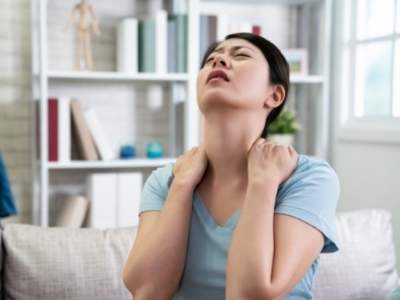
If you suspect parasites—I recommend consulting with an experienced herbalist or provider. There’s a wealth of information out there but much of what is out there is incomplete. Don’t go it alone. For those determined to forge their way without guidance I can recommend some safe products but if the results aren’t what you want, seek help. It’s also possible that your root cause is not parasites and a professional can help assess your whole health state.
Additionally, if you take medications or other supplements a skilled provider can help prevent accidental toxicity from combining herbs and medications or supplements. Don’t overdo it! If you have done your own cleanse 2-3 times and still have problems—you need help!
Receiving proper treatment for parasitic infections is crucial for safeguarding your health and well-being. Effective parasite treatment not only eliminates harmful organisms from your body but also prevents potential complications with long-term health issues, as well as ruling out other potential illnesses, and preventing incorrect treatment. By seeking appropriate medical care and following recommended treatment protocols, you can restore your body's balance and ensure optimal health!
Written by Jayelah Bush, BScN
Medically reviewed by Dr. Natacha Montpellier, ND, B.Sc.
Article Courtesy of Fullscript
Bone broth (stock) is a liquid made from simmering bones in water over a period of time. Drinking bone broth on its own, or using it as a base for soups and other dishes, is a great way to get its health benefits. Bone broth contains many important nutrients, including amino acids, collagen, and protein. (11) Scientific evidence suggests that the nutrients in bone broth may support digestive health, joint health, a healthy immune system, and more.
Keep reading below to learn about bone broth benefits, and how to make your own bone broth at home.
Amino acids, the building blocks of proteins in our cells and tissues, are one of the main components of bone broth. Proteins are used within the body to perform many bodily functions as well as repair, build, and grow bodily tissues. (7)(15) Research indicates that the components of bone broth can benefit the body from head to toe, from mental health to skin health.
Bone broth is a good source of the amino acid glycine, which plays a key role as a neurotransmitter (messenger between nerves and cells), influencing brain development, motor skills, and behavior. (4)(11)(18) Glycine also has anti-inflammatory and antioxidant properties. Research demonstrates that glycine can decrease neurological (brain and spinal cord) damage related to oxidative stress in mice. (22) Cellular damage related to oxidative stress can negatively affect the nervous system, potentially playing a role in the development of neurological diseases such as Alzheimer’s disease and Parkinson’s disease. (19)
Beef bone broth is rich in the amino acid glutamine, the most abundant and widely used amino acid in the body. (7)(11) About 30% of total body glutamine is used by the digestive tract to support intestinal health. Its functions include supporting a healthy inflammatory response, maintaining the intestinal barrier, and regulating intestinal cell death. (10) In gut health conditions such as inflammatory bowel disease, glutamine levels are significantly lower than healthy individuals. (8) Regularly drinking bone broth may help increase glutamine levels to support digestive health. (11)
Not only is glutamine a key nutrient for a healthy gut but also a healthy immune system. Leukocytes (white blood cells) require glutamine for proper function. During illness or injury, glutamine is used by the immune system just as much, if not more, than glucose (sugar), the main source of energy for the human body. Glutamine can be created within the body, but levels are often insufficient during times of illness. Research indicates that supplementing with glutamine before or after a major health event, such as bone marrow transplantation, radiation treatment, or surgery, may be beneficial for immune health. (7)
Joint pain related to osteoarthritis (joint damage) is one of the most common causes of chronic pain, affecting millions of North Americans. (6)(17) Osteoarthritis occurs when joint cartilage (tough, flexible tissue) degrades, causing bones to scrape against each other as the joint moves. This can eventually cause pain and negatively impact all areas of connective tissue, including bone, cartilage, ligaments, and tendons. (5)(13) Collagen is the main structural protein found in skin and other connective tissues, such as cartilage. Collagen can be synthesized in the body using amino acids, or obtained from dietary or supplement sources. (23) Consuming more collagen and collagen-building amino acids and nutrients may be one way to promote bone and joint health. (2)(17)
Bone broth is a good dietary source of collagen and collagen-building amino acids. (11) Clinical and animal research has demonstrated that supplementing with collagen extract derived from chicken bones, like that from chicken bone broth, may be effective for decreasing joint pain. (12)(20)
Skin, the body’s largest organ, contains up to 70% of collagen, which plays an important role in maintaining skin structure and elasticity. (3)(21) Aging reduces collagen production within the body, which can weaken skin elasticity and strength, causing the skin to become thin, dry, and wrinkled. (3) Research suggests that collagen is a major component in the “anti-aging” of skin. (21) Bone broth collagen may be just what your skin needs for a youthful glow.
Bone marrow is the fatty, soft, spongey tissue found in the center of most bones. Marrow bones (e.g., femur) are good choices for bone broth as they contain high amounts of collagen and amino acids. As a fatty tissue, bone marrow is also a rich source of vitamin D, which is stored in fat. One reported case has noted that regularly drinking high volumes of bone broth, notably beef bone broth, may lead to hypervitaminosis D (excess vitamin D). (16) Hypervitaminosis D can lead to hypercalcemia (excess blood calcium) which can cause serious health complications, including fragile bones, fatigue, and vomiting. (14)
In addition to the important amino acids and key nutrients found in animal bones, there may also be trace amounts of heavy metals, such as lead. However, research indicates that the levels of heavy metals present in bone broths are not considered dangerous, falling within the Maximim Residue Limits (MRLs) established by the U.S. Department of Agriculture. (9)
Making bone broth at home on the stovetop or in a slow cooker is the best way to get its amazing health benefits. A study reported that store-bought bone broth was found to be lower in all amino acids than the self-prepared varieties. (1) While it may sound daunting, making your own bone broth is actually fairly simple.
Simple bone broth
Prep time: 15 minutes Cook time: 18-24 hours
Total time:~24 hours
Servings: 4 servings
Notes: Although not necessary, roasting your bones before simmering can improve the flavor of the broth.
Limit toxin exposure by using bones from organic, sustainable, grass-fed, pasture- raised, and/or free-range sources.
Add vegetables, herbs, and spices to enhance flavor and nutrients.
Ingredients
2-4 lbs (1-2 kg) chicken or beef bones
1 gal (4 L) water
2 tbsp (30 mL) apple cider vinegar
Preparation
The health benefits of bone broth come from its rich nutrient content, including the protein collagen and its related amino acids. Consuming bone broth may support a variety of health facets, including mental health and joint health. Bone broth is mostly considered safe, but may contain trace amounts of heavy metals and can lead to vitamin D toxicity if consumed in excess. Sourcing high-quality animal bones and making bone broth at home is one way to limit toxin exposure and increase the nutrient content. If you’re a patient, consult with your integrative healthcare provider before making any major changes to your diet.
Why are we so passionate about mental health at Raja Wellness?
The link between mental health and cardiovascular health is quite significant. Stress, especially chronic psychological stress, has a profound impact on the cardiovascular system. When the “stress response” is activated, the body secretes glucocorticoids, epinephrine, and other hormones, while inhibiting the secretion of growth hormone, insulin, and reproductive hormones. The sympathetic nervous system is also activated, leading to increased heart rate and blood pressure, among other physiological changes that divert blood to areas needed for immediate survival, such as the muscles and lungs, and away from non-essential areas like the gut and reproductive organs. This response is adaptive in the short term, but chronic activation due to chronic stress can lead to serious cardiovascular issues such as hypertension, atherosclerosis, and myocardial ischemia.
This connection between mental health and cardiovascular health highlights the intricate intertwining of psychological and physiological factors. The body's response to chronic stress can have detrimental effects on the cardiovascular system, emphasizing the importance of managing and addressing mental health to promote overall well-being, including cardiovascular health.
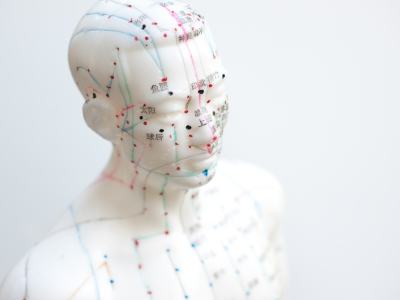
Acupuncture has many benefits for cardiovascular health:
1. Stress Reduction: Stress is a known risk factor for cardiovascular diseases. Acupuncture has been shown to modulate the body's stress response, potentially reducing the impact of stress on the heart and blood vessels.
2. Blood Pressure Regulation: Studies indicate that acupuncture may help in regulating blood pressure. By targeting specific acupuncture points, practitioners aim to optimize blood circulation and blood pressure levels, contributing to better cardiovascular function.
3. Inflammation Management: Chronic inflammation is closely linked to cardiovascular conditions. Acupuncture may exert anti-inflammatory effects, potentially reducing the systemic inflammation associated with heart disease.
4. Enhanced Circulation: The stimulation of acupuncture points is believed to enhance microcirculation, improving blood flow to vital organs including the heart. Enhanced circulation can promote heart health and overall cardiovascular function.
5. Complementary Therapy: Acupuncture is often used as a complementary therapy alongside conventional medical treatments for cardiovascular issues. It may help alleviate symptoms, improve overall well-being, and enhance the effects of standard cardiovascular care.
While acupuncture has clear benefits for cardiovascular health, we recommend individuals consult healthcare professionals before integrating acupuncture into their treatment regimen. Moreover, acupuncture alone may not be enough for people dealing with chronic stress.
Learning to manage our stress is a key part of maintaining heart health—and that’s where professional mental health care is so important as part of your overall wellness.
Herbal formulas also play an important role in heart health. Many formulas have been shown to reduce cholesterol and blood lipid levels, decrease inflammation, and increase peripheral circulation. For example, Clear Mind Formula is one of my favorite herbal formulas for heart health, especially here in Kentucky because of its natural antifungal and antimicrobial properties. This is a raw herbal concoction that we make in-house. We do recommend consulting with a trained herbalist before incorporating any herbal remedies into your care plan.
or
For more information, please don’t hesitate to call us at 270-506-3853 today!
References:
1. Wayne PM, Kaptchuk TJ. Challenges inherent to t'ai chi research: part II-defining the intervention and optimal study design. Journal of Alternative and Complementary Medicine. 2008;14(2):191-197.
2. Fu, C., Zhao, N., & Liu, Z. (2013). Chronic pain: acupuncture and related therapies. Springer Science & Business Media
3. Chen J, Ye C, Yang Z, Zhang C, Li P, Xu B, Wu A, Zhang X, Xue X. Erchen decoction to reduce oxidative stress in dyslipidemia phlegm-dampness retention syndrome mice: In vivo mechanism revealed by metabolomics (liquid chromatography-mass spectrometry). Phytomedicine. 2023 Jul;115:154808. doi: 10.1016/j.phymed.2023.154808.
As we come into the darker part of winter and the days approach their shortest lengths, many people struggle with their mood. Sometimes called Seasonal Affective Disorder it can range from mild to severe. In addition, the holidays can be a difficult time for many people—especially when dealing with loss, isolation, or inability to connect with family and friends. There are options for getting through this time with greater ease and well-being.
From a Chinese Medicine perspective, this time of year calls for a natural slowing and drawing inward: a time for nurturing, quiet contemplation and taking a break from the tendency to strive for more.
From this perspective, the desire to slow down and reflect is not pathological but a natural reflection of the seasonal changes. This time is important to consolidate and prepare for the coming growth of spring. It’s ok to not always be striving and pushing. However, it should not be a depressing struggle. If you struggle with this time of year here are some recommendations to navigate the shorter days with better ease:

Acupuncture has gained popularity recently for its benefits in improving immune system function. This holistic approach involves the insertion of thin needles into specific points on the body to stimulate energy flow and restore balance. While acupuncture is commonly known for its effectiveness in pain management, it also offers numerous advantages for boosting the immune system.
One of the primary benefits of acupuncture is its ability to reduce stress levels. Stress has a significant impact on the immune system, weakening its response to pathogens and increasing the risk of illness. Acupuncture helps to regulate the body's stress response by promoting the release of endorphins, which are natural painkillers and mood enhancers. This, in turn, reduces stress and anxiety, allowing the immune system to function optimally!
Furthermore, acupuncture has been found to enhance the production of immune cells, such as natural killer cells, which play a crucial role in defending the body against viruses and cancer cells. A study published in the Journal of Traditional Chinese Medicine found that acupuncture increased the activity of natural killer cells, suggesting its potential to improve immune system function.
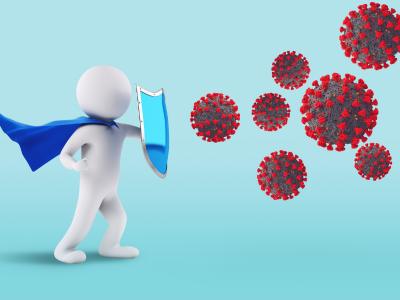
In addition to boosting immune cell production, acupuncture also improves circulation. The flow of blood and lymphatic fluid is essential for the proper functioning of the immune system, as it helps transport immune cells and nutrients throughout the body. By stimulating specific acupuncture points, blood circulation is enhanced, allowing immune cells to reach their destinations more efficiently.
Moreover, acupuncture has been shown to regulate inflammation, a key factor in immune system function. Chronic inflammation can impair immune responses and lead to various health conditions. Research published in the Journal of Neuroimmunology demonstrated that acupuncture can modulate the production of inflammatory cytokines, reducing inflammation and promoting a balanced immune response.
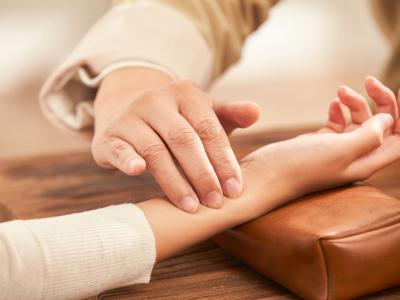
In addition to the benefits above, acupuncture has been known to also assist with other things that may contribute to improved immune function:
Balancing Energy Flow (Qi): According to traditional Chinese medicine theory, acupuncture helps balance the flow of vital energy, or "Qi," through the body's meridians. When Qi flows smoothly, it is believed to support overall health, including immune function.
Stimulating Lymphatic Flow: The lymphatic system plays a crucial role in the immune response by filtering out toxins and waste products. Acupuncture may help stimulate lymphatic flow, aiding in the removal of these substances.
Improving Sleep Quality: Quality sleep is essential for a healthy immune system. Acupuncture may help improve sleep patterns and address conditions like insomnia or sleep disturbances that can weaken the immune system.
Supporting Organ Function: Acupuncture is believed to influence the function of specific organs, which can indirectly impact immune health. For example, the spleen is considered important for immune function in traditional Chinese medicine, and acupuncture may be used to support its function.
It is important to note that acupuncture should not be considered a standalone treatment for immune system disorders or diseases. It is most effective as a complementary therapy alongside conventional medical treatments. Consulting with a qualified acupuncturist and healthcare professional is crucial to ensure a comprehensive and personalized approach to immune system support while supporting your specific needs and goals.
Book an appointment HERE with one of our highly qualified Acupuncturists today!
References:
1. National Library of Medicine: Acupuncture and Immunity
It’s looking like Newvember with all the great changes we have coming!
Raja Wellness welcomes Fielding Carroll, LAc! Those of you coming in to see us for allergy treatments recently have probably already met Fielding. Fielding is a native Kentuckian and a classmate of mine from Acupuncture school. I am happy to welcome him aboard to our team! He’s been diligently learning the nuances of SAAT (our specialty acupuncture technique for alleviating allergies of all kinds that was pioneered by Dr. Soliman). In addition to his focus on mastering this new technique, he brings a wealth of experience in the treatment of digestive disorders and health coaching embracing food as the first medicine and foundation of better health! In addition to offering acupuncture services, personalized nutritional coaching is also available with Fielding.
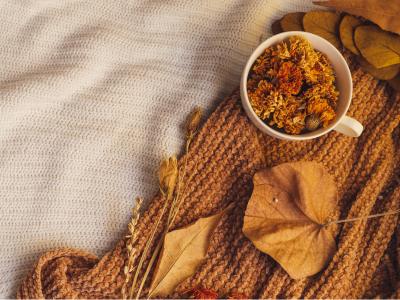
Fall wellness is a frequent topic for us—as the days get shorter and colder, it’s important to fuel our immune systems with adequate rest, plenty of fresh fruits and veggies and to reduce junk foods from our diet. Our gut and immune systems are intimately intertwined and for some people, probiotic support may be helpful in addition to meditation, immune-supporting herbs, and preventative acupuncture care.
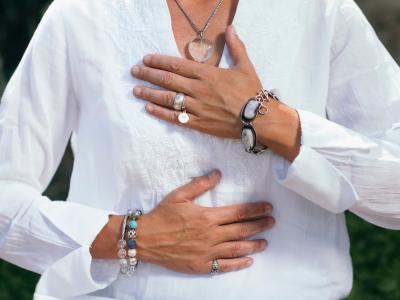
As we move forward toward 2024, we want to let our patients know our prices will be going up. We strive to offer a range of services at affordable prices and as part of that commitment, we are announcing this change early to give patients the option to “stock up” on treatments at our current price. All patients currently scheduled will pay the price at the time their service was booked. Current patients can pre-pay up to 5 visits each at our current rates, but those visits must be used before Mar 31, 2024. Our new prices will go into effect Dec 1, 2023 for all visits booked after that date.
In addition, you will see some new options in our services including nutrition coaching with Fielding, FSM-only treatments, BrainTap sessions & Glow sessions (combined light therapy & FSM for renewed skin). With those new options, we are also testing out some membership options, giving patients access to a select combination of treatments monthly at a reduced cost for members. Watch your emails for early access to these!
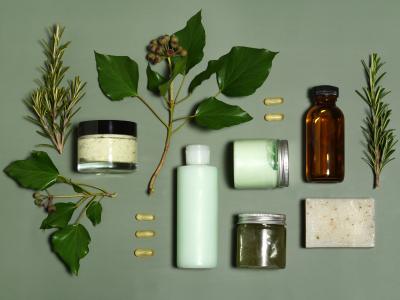
Our online store is also coming back soon with some changes!
At Raja Wellness, we continually strive to make your shopping experience as easy and affordable as possible.
CBD is legal in all 50 states, yet some banks and credit card processors impart their judgments on access to these legal products by refusing to process transactions involving the sales of CBD products of any kind. Their oversight unfortunately incorrectly flagged our blog about the health benefits of CBD for osteoporosis as a “product for sale” and our processor held our funds and thus forced us to stop using them as a processor. This has been a gray area for many years and is one of the reasons you see CBD in our offices but not in our online store. Unfortunately, the list of companies that allow this is very short. Please bear with us as we continue to search for a more fair, CBD-friendly payment processor that also allows us to offer you the best prices and convenience.
I wanted to share my thought process and observations with my own recent experience with alpha-gal.
Alpha-gal, short for Alpha-galactose, refers to a complex sugar molecule found in the tissues of non-primate mammals, including cows, pigs, and other animals. It is also present in certain insects like ticks. Alpha-gal is known to trigger an immune response in some individuals, leading to an allergy called Alpha-gal syndrome. People with this condition may experience delayed allergic reactions after consuming red meat or products derived from mammals. Symptoms can range from mild to severe and may include hives, gastrointestinal discomfort, or even anaphylaxis. Alpha-gal has gained attention in recent years due to its association with tick bites and its impact on dietary choices and lifestyle adjustments for affected individuals.
Almost 5 years ago when I was doing my initial training with Dr. Soliman, about 1/3 of the class-tested weak to alpha-gal who didn’t think they had it—including myself. That explained why sometimes after I had bacon and eggs my stomach was off—I was beginning to think I had pepper sensitivity but we checked pepper too and only alpha-gal was weak. We did each other's needles as part of learning the process and 3 weeks later after I took out my needles, I had no issues with bacon and eggs. During that 3 weeks, I didn’t eat mammal meat or drink milk but otherwise, I didn’t kill myself avoiding mammal while the needles were in because I didn’t realize I even had an issue. Since then, I haven’t had any issues with mammal.
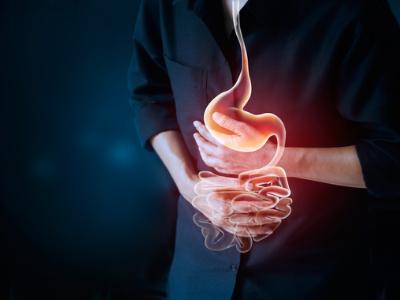
In an interesting twist of fate, my last tick experience resulted in a tick that tested negative for carrying any pathogens (thanks to the University of Kentucky tick tracking program, that testing was free for me) but I found myself experiencing what I thought was food poisoning about 6 weeks after the bite. I rarely get a stomach bug, but it didn’t feel quite like food poisoning. During that time, there was a stomach bug going around, so I stayed home to not share any bugs with my patients. I felt rough all day, but better by dinner which included mac & cheese with pork sausage…and I started feeling off again. I realized both dinners had pork. I took a Pepcid and within an hour I started feeling better—never progressed to vomiting. By the next morning, I felt great but was reasonably certain I had alpha-gal. It felt a lot like my patients' stories (I see a lot of alpha-gal patients!). It was going to be a couple of weeks to get into my doctor to get the blood test, but I see this every day.
The next morning at the office to get a clear test, I pull the basic alpha-gal filters: I check (alpha-gal, beef, pork, lamb, gluten, and MCAS) and to not bias my testing (because I know I might be weak to all of them), I add in some I’m pretty sure are safe: chicken, eggs, oats, rice, and avocado. My office manager has a good sense of feel and with a little coaching, I have good confidence in her ability to provide even pressure with each filter. She randomly puts them in the tray and tests me without looking at the labels with me looking away from the tray so I can’t see them—some test weak, some test strong…no surprise.
What was a surprise was the results—not the alpha-gal testing weak (I was pretty sure on that one), but the individual meats don’t test weak, nor does the gluten. It’s surprising as is the rice and the oats, but it also explains why I felt so bad the day before. I had a large bowl of oatmeal for breakfast and again for lunch to settle my stomach and felt bad all day. I conducted further testing using my specially formulated spays (currently in development, stay tuned!) with promising results. Now the question is how much mammal do I need to avoid to feel good? The meats and large amounts of dairy are out, but perhaps I can keep the cream in my coffee...
I do a 24-hour strict no-mammal or dairy diet and I feel great. Then I had my usual cream in my coffee—no symptoms initially, but around midday, I realize I have no motivation—I don’t want to be outside, I don’t feel like riding my horse, I can’t focus on anything I’m doing! Sure these aren’t allergy symptoms in the traditional sense, but they are not “my normal” by a long shot. I then eliminate regular cream for the next few weeks. I used coconut cream in my coffee and my brain wasn’t falling apart the afternoon! I take my specially formulated sprays and prep mammal-free meals for the week; including a dairy-free dark chocolate espresso bread with 9g of protein, no refined sugar, and no saturated fats. It’s not gluten-free; I adapted it from a gluten-free paleo recipe and swapped the coconut flour for organic white flour, so it easily could be.
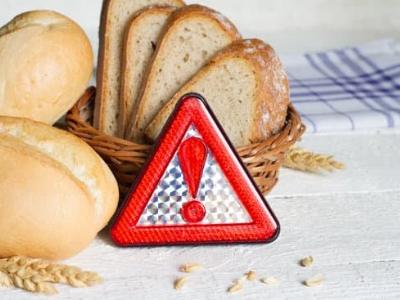
In the end, it turns out allergies aren’t monolithic—it’s not always the same reaction to different things. I hear patients all the time tell me they tolerate dairy just fine and their allergist said they could have it because it didn’t show on the blood test—but just because you aren’t having hives, throwing up, or experiencing the “typical” allergies it doesn’t mean you are tolerating it. I’m not saying some people don’t tolerate dairy just fine with alpha-gal, I see patients who do. But it’s worth cutting things out for a few days to see what improves.
It’s not easy to do—I get it! My husband is not thrilled with this turn of events because he does a lot of our cooking and now he’s having to adapt for me. I thought a cake we made turned out pretty well, but he didn’t like it. Once I figure out why, I can hopefully tweak the recipe to work for both of us (I suspect he tastes too much coconut from the coconut oil or it wasn’t sweet enough for his taste). Apple sauce, banana, or shredded zucchini would have worked to tweak the taste too. I’ll try it again and see what happens. Cooking is an alchemy of transforming a pile of things into something else, and there’s more than one way to get there!
I’m pretty aware of what my body is feeling these days, I’ve learned the hard way to listen to it. My hope is you don’t have to suffer from not listening to your body—to be curious and notice not just the physical sensations you experience but mentally and emotionally how you feel as well and take that into account when making your food choices.
Yours in health,
Jenny-Marie
As a person who was raised to look at every creature as having a place and purpose in the world—I admit there is a short list of critters I just can’t find a reason to have around. At the top of my list is the tick. Some of the most stubborn diseases we treat come from a bite from these tiny bloodsuckers. Worse yet, the range of conditions keeps growing; both in terms of geographical regions and the types of pathogens they carry.
Early diagnosis and removal of the tick are essential in preventing the development of severe complications. Additionally, preventive measures such as wearing protective clothing, using insect repellents (we are currently working on developing one!), and conducting regular tick checks after outdoor activities can help minimize the risk of tick bites and subsequent diseases.
One of our local universities is doing a study analyzing ticks that are being sent in from around the region to map what they are carrying and where they are found. I highly encourage you to support the University of Kentucky in this initiative and as a bonus, they will send you a report of their findings (here is a sample):
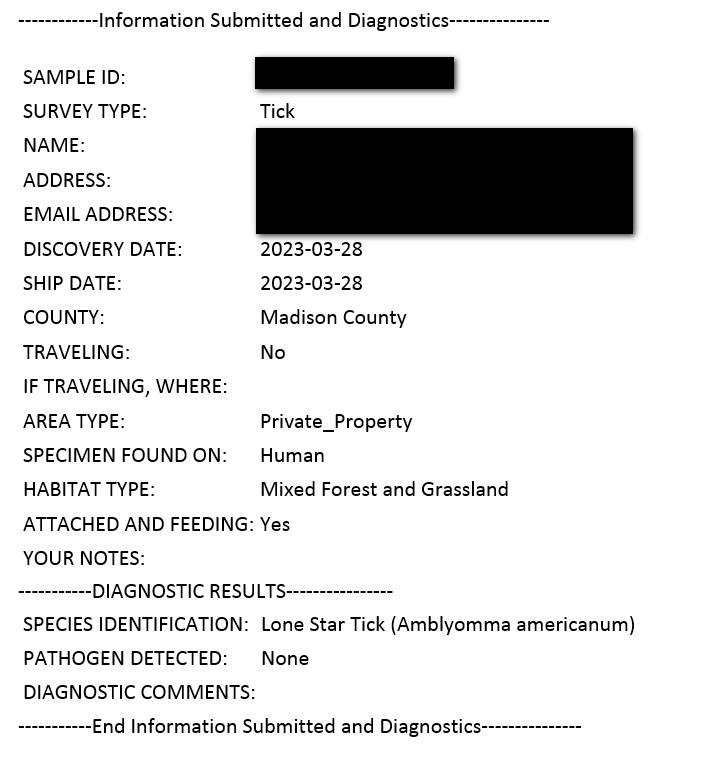
For me, it was peace of mind to know that the ticks I found attached to me were not carrying anything harmful.
University of Kentucky Entomology Page
University of Kentucky Guide to Identification and Testing and form link
So what was I worried about? In our area, Lyme and Rocky Mountain Spotted Fever are common, and along with those, Babesiosis and Ehrlichiosis are possible infections. Even before I had the results—I took steps to protect myself. I don’t often recommend antibiotics unless absolutely necessary but for people who tolerate doxycycline well it’s definitely worth a call to your doctor to discuss doing a prophylactic round of antibiotics after a tick bite. Not all of us have that option though—I have a genetic anomaly that puts many medications on the “avoid if possible list”, including most antibiotics, so I have developed other strategies for care. I took 2 weeks of strong anti-microbial herbs that have an excellent track record against most tickborne diseases and also boost immune activity as a precaution. As an additional concern, since one of the ticks was a Lone Star Tick, there was a chance of developing an allergic reaction to mammals (see our Alpha Gal article for more information about this unusual allergy). Fortunately, I didn’t develop that either but if I had—yes, acupuncture can help with that too!
If you made it this far into the article, congratulations! As a thank you for being loyal reader, use the code “tickssuck” for 10% off you next order from our website. Discount code valid 6/15/23 - 7/15/23. Not valid with other offers, not valid for gift cards. Other restrictions may apply.
Now, back to the tickborne diseases—part of the challenge with diagnosing tickborne infections is the testing can be very inaccurate with a high rate of false negatives. Most of these pathogens excel at hiding in tissues rather than circulating in the bloodstream allowing them to be hidden in the body and evading detection through traditional methods. Further complicating the issue is for people who have a history of concussion or whiplash injuries, these pathogens can more easily bypass the blood brain barrier and infiltrate the brain creating a host of neurological symptoms. In fact, some studies found that people who have had a concussion or whiplash are 80% more likely to develop chronic issues from tickborne diseases than those who don’t. The link between post-concussive issues and chronic tickborne diseases has only recently been published in the medical literature, but I see it frequently in the clinic. I suspect the 80% is a conservative number based on what I see in the office—so far 100% of my chronic tickborne disease patients have a history of concussion or whiplash.
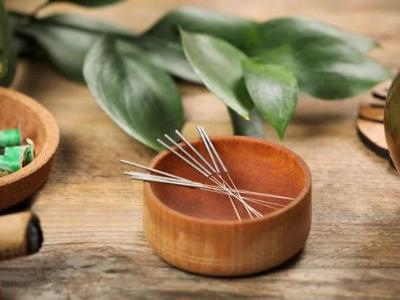
Acupuncture is a useful adjunct in these cases, but acupuncture alone will not resolve these cases. It takes an intensive combination of herbs, nutritional supplements, dedication to eating mostly anti-inflammatory foods, and getting enough rest and meditation to help heal the brain to see a full recovery—but the good news is there is hope. It’s not a fast process, but it is effective for the majority of our patients who follow their care guides. So if you or someone you know is struggling with unexplained fatigue, joint pain, brain fog, persistent muscle knots that don’t respond to body work or acupuncture, weird non-diabetic neuropathy and otherwise feel awful but their bloodwork is all normal—odds are very good that we can help!